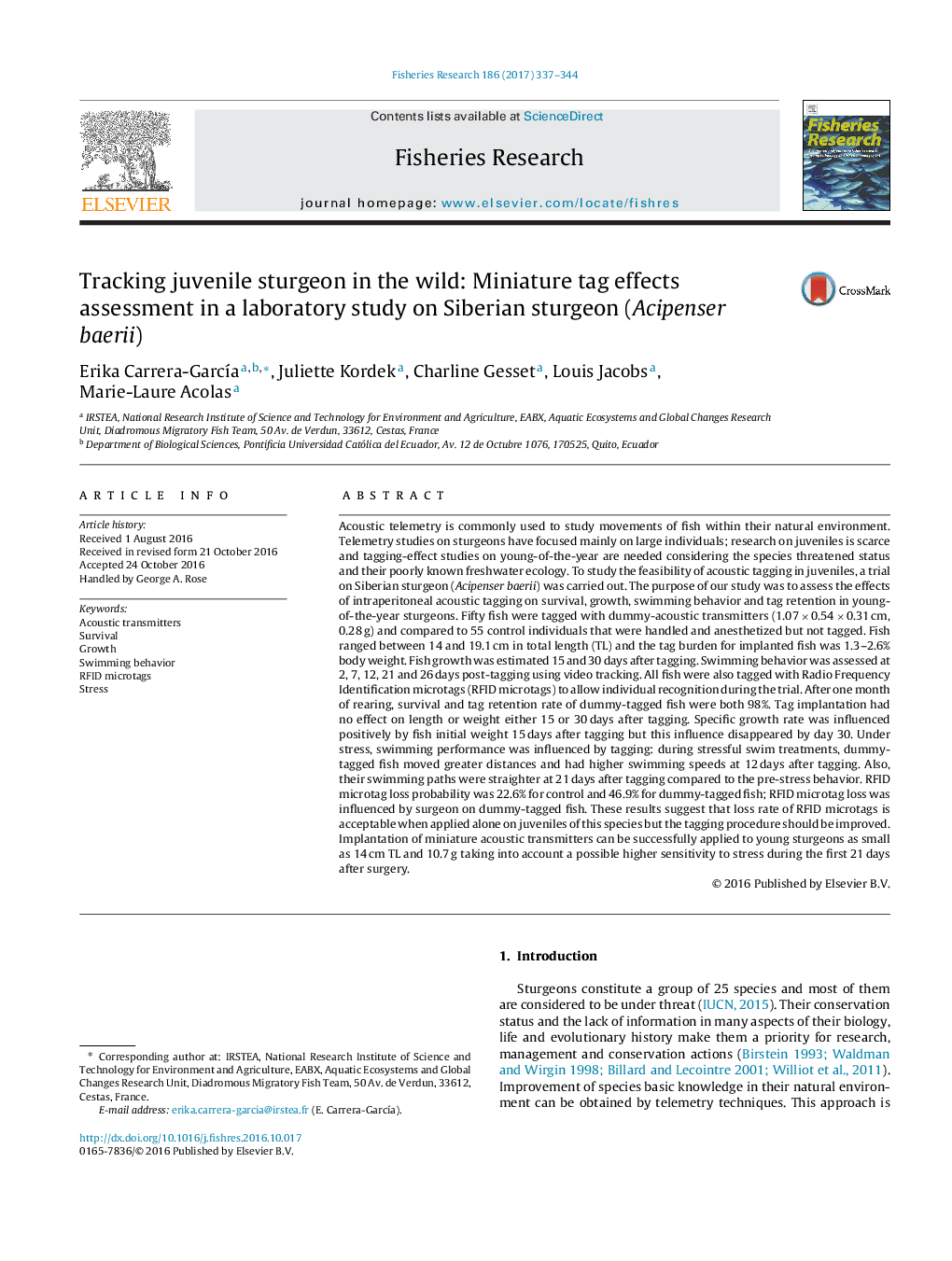| کد مقاله | کد نشریه | سال انتشار | مقاله انگلیسی | نسخه تمام متن |
|---|---|---|---|---|
| 4542628 | 1413079 | 2017 | 8 صفحه PDF | دانلود رایگان |
Acoustic telemetry is commonly used to study movements of fish within their natural environment. Telemetry studies on sturgeons have focused mainly on large individuals; research on juveniles is scarce and tagging-effect studies on young-of-the-year are needed considering the species threatened status and their poorly known freshwater ecology. To study the feasibility of acoustic tagging in juveniles, a trial on Siberian sturgeon (Acipenser baerii) was carried out. The purpose of our study was to assess the effects of intraperitoneal acoustic tagging on survival, growth, swimming behavior and tag retention in young-of-the-year sturgeons. Fifty fish were tagged with dummy-acoustic transmitters (1.07 × 0.54 × 0.31 cm, 0.28 g) and compared to 55 control individuals that were handled and anesthetized but not tagged. Fish ranged between 14 and 19.1 cm in total length (TL) and the tag burden for implanted fish was 1.3–2.6% body weight. Fish growth was estimated 15 and 30 days after tagging. Swimming behavior was assessed at 2, 7, 12, 21 and 26 days post-tagging using video tracking. All fish were also tagged with Radio Frequency Identification microtags (RFID microtags) to allow individual recognition during the trial. After one month of rearing, survival and tag retention rate of dummy-tagged fish were both 98%. Tag implantation had no effect on length or weight either 15 or 30 days after tagging. Specific growth rate was influenced positively by fish initial weight 15 days after tagging but this influence disappeared by day 30. Under stress, swimming performance was influenced by tagging: during stressful swim treatments, dummy-tagged fish moved greater distances and had higher swimming speeds at 12 days after tagging. Also, their swimming paths were straighter at 21 days after tagging compared to the pre-stress behavior. RFID microtag loss probability was 22.6% for control and 46.9% for dummy-tagged fish; RFID microtag loss was influenced by surgeon on dummy-tagged fish. These results suggest that loss rate of RFID microtags is acceptable when applied alone on juveniles of this species but the tagging procedure should be improved. Implantation of miniature acoustic transmitters can be successfully applied to young sturgeons as small as 14 cm TL and 10.7 g taking into account a possible higher sensitivity to stress during the first 21 days after surgery.
Journal: Fisheries Research - Volume 186, Part 1, February 2017, Pages 337–344
